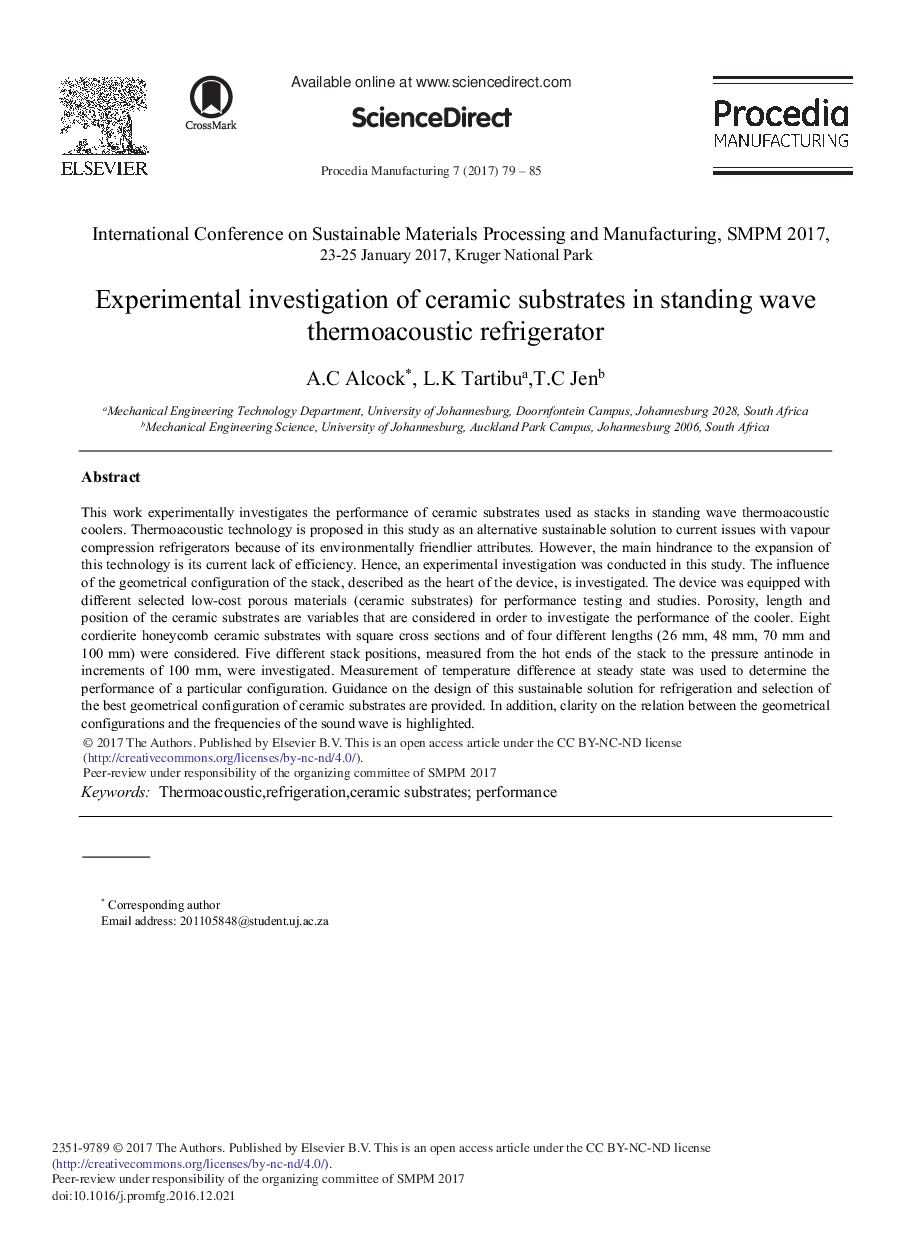| Article ID | Journal | Published Year | Pages | File Type |
|---|---|---|---|---|
| 5129140 | Procedia Manufacturing | 2017 | 7 Pages |
This work experimentally investigates the performance of ceramic substrates used as stacks in standing wave thermoacoustic coolers. Thermoacoustic technology is proposed in this study as an alternative sustainable solution to current issues with vapour compression refrigerators because of its environmentally friendlier attributes. However, the main hindrance to the expansion of this technology is its current lack of efficiency. Hence, an experimental investigation was conducted in this study. The influence of the geometrical configuration of the stack, described as the heart of the device, is investigated. The device was equipped with different selected low-cost porous materials (ceramic substrates) for performance testing and studies. Porosity, length and position of the ceramic substrates are variables that are considered in order to investigate the performance of the cooler. Eight cordierite honeycomb ceramic substrates with square cross sections and of four different lengths (26mm, 48mm, 70mm and 100mm) were considered. Five different stack positions, measured from the hot ends of the stack to the pressure antinode in increments of 100mm, were investigated. Measurement of temperature difference at steady state was used to determine the performance of a particular configuration. Guidance on the design of this sustainable solution for refrigeration and selection of the best geometrical configuration of ceramic substrates are provided. In addition, clarity on the relation between the geometrical configurations and the frequencies of the sound wave is highlighted.
